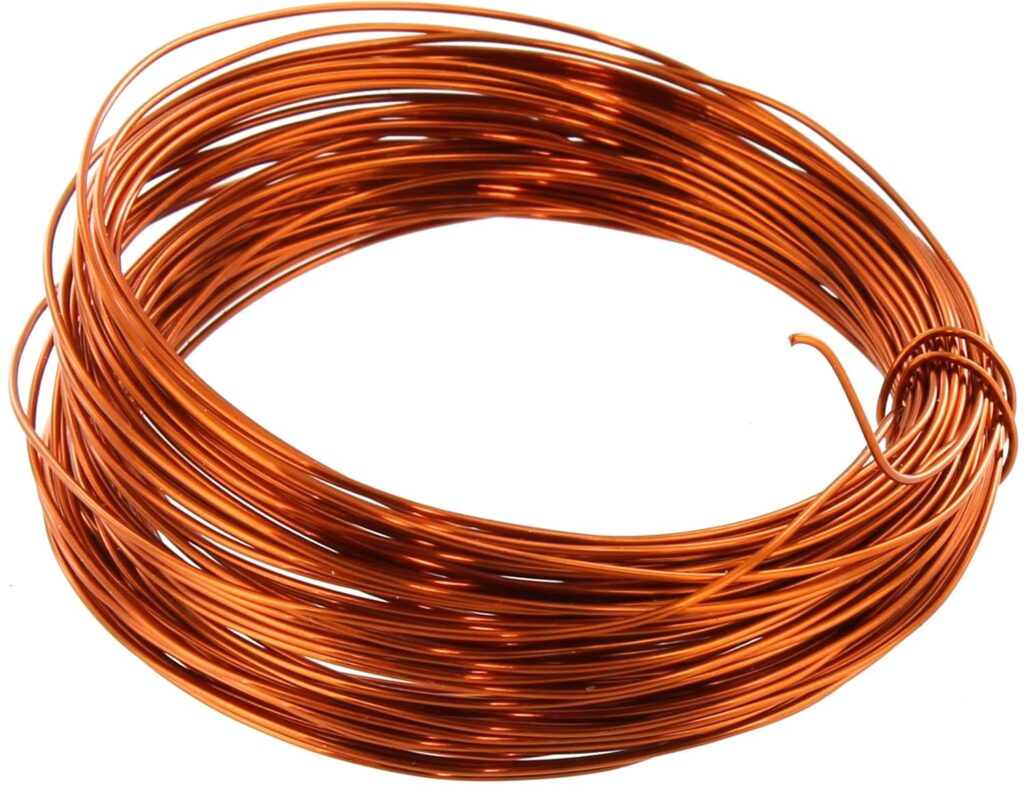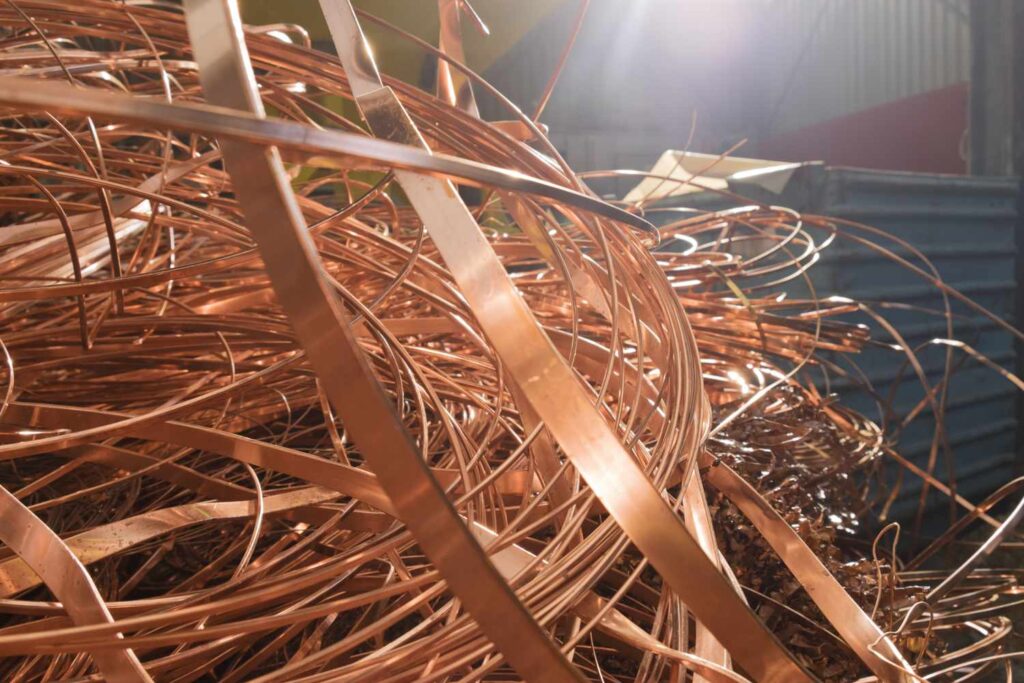Ang Copper Wire usa ka sukaranan nga sangkap sa kalibutan sa electrical engineering ug electronics, gipabilhan alang sa labing kaayo nga pagdaghan ug kaarang. Two widely used types of copper wire are bare copper wire ug enameled copper wire. While both are made from high-purity copper, they differ significantly in structure, application, ug pasundayag. Understanding these differences is essential for selecting the right wire for specific applications.
What is Bare Copper Wire?
Definition and Structure
Bare copper wire is copper wire in its simplest form, without any additional insulation or coating. It is often drawn into various gauges to suit different applications. Bare copper wire is highly conductive and retains the natural properties of copper, including its thermal and electrical conductivity.
Types of Bare Copper Wire
- Soft Bare Copper Wire: Annealed for flexibility and ease of use.
- Hard Bare Copper Wire: Not annealed, providing greater strength and rigidity.

Panguna nga mga Kinaiya
- High Conductivity: Bare copper wire offers excellent electrical conductivity, making it ideal for efficient power transmission.
- Corrosion Resistance: Although bare copper can oxidize, it still maintains conductivity over time.
- Mechanical Strength: Available in soft and hard forms to suit different mechanical requirements.
Kasagaran nga Aplikasyon
Bare copper wire is widely used in:
- Electrical Grounding: Its conductivity and lack of insulation make it ideal for grounding electrical systems.
- Power Transmission: Used in power lines and cables due to its high conductivity.
- Busbars: Employed in substations and electrical panels for distributing power.
- Telekomunikasyon: Acts as a conductor in various communication systems.
What is Enameled Copper Wire?
Definition and Structure
Enameled copper wire, also known as magnet wire, is a cable cleina coated with a thin layer of insulating enamel. This enamel can be made from materials like polyurethane, polyester, or polyimide, depending on the intended application.
Types of Enameled Copper Wire
- Single-Coated Wire: Features a single layer of insulation.
- Double-Coated Wire: Has an additional layer for enhanced protection and performance.
- High-Temperature Wire: Designed for applications requiring heat resistance.

Panguna nga mga Kinaiya
- Pagbulag: The enamel coating provides electrical insulation, preventing short circuits.
- Thermal Resistance: High-quality enameled wires can withstand extreme temperatures.
- Pagkaarang: Despite the insulation, enameled wires maintain flexibility for easy winding and shaping.
- High Efficiency: The thin insulation allows for tight winding, optimizing space in devices like transformers and motors.
Kasagaran nga Aplikasyon
Enameled copper wire is widely used in:
- Motors and Generators: For winding coils and creating electromagnetic fields.
- Mga transformer: Essential for the construction of energy-efficient transformers.
- Electromagnetic Coils: Used in inductors, solenoids, and speakers.
- Consumer Electronics: Found in small electrical devices, such as headphones and chargers.
Key Differences Between Bare Copper Wire and Enameled Copper Wire
1. Pagbulag
- Bare Copper Wire: No insulation, leaving the wire exposed.
- Enameled Copper Wire: Coated with a thin layer of enamel for insulation.
2. Electrical Applications
- Bare Copper Wire: Ideal for grounding and high-conductivity applications where insulation is unnecessary.
- Enameled Copper Wire: Best suited for electromagnetic applications requiring insulated conductors.
3. Thermal Properties
- Bare Copper Wire: Limited thermal resistance, directly exposed to the environment.
- Enameled Copper Wire: Can be designed for high-temperature applications with specialized coatings.
4. Kalig-on
- Bare Copper Wire: Susceptible to oxidation, which can form a patina over time.
- Enameled Copper Wire: Protected from oxidation due to the enamel coating, increasing longevity.
5. Mechanical Flexibility
- Bare Copper Wire: Available in both rigid and flexible forms depending on treatment.
- Enameled Copper Wire: Flexible and optimized for tight winding applications.
6. Gasto
- Bare Copper Wire: Generally less expensive due to the absence of additional materials.
- Enameled Copper Wire: Higher cost due to the insulating coating and specialized manufacturing processes.
How to Choose Between Bare Copper Wire and Enameled Copper Wire
Considerations for Bare Copper Wire
- Grounding Needs: Bare copper is the standard for grounding systems.
- Cost Constraints: Its simpler manufacturing process makes it more economical.
- Outdoor Applications: Often used in open environments where insulation is unnecessary.
Considerations for Enameled Copper Wire
- High-Frequency Applications: Ideal for devices requiring electromagnetic coils.
- Space Efficiency: Thin insulation allows for compact winding.
- Thermal Resistance: Essential for environments with fluctuating or high temperatures.
Factors to Evaluate
- Electrical Requirements: Consider conductivity and insulation needs.
- Mga Kondisyon sa Kalikopan: Assess exposure to moisture, heat, ug mga kemikal.
- Aplikasyon: Choose based on whether grounding, power transmission, or electromagnetic properties are needed.
Environmental Impact and Recycling
Both bare copper wire and enameled copper wire are recyclable, contributing to sustainable practices in the industry. Hinuon, recycling enameled copper wire requires additional steps to remove the insulation.

- Bare Copper Wire Recycling: Easier to recycle due to the lack of coating.
- Enameled Copper Wire Recycling: Requires burning or stripping to remove the enamel, which can release pollutants if not done correctly.
Promoting the use of recycled copper in manufacturing can reduce environmental impact and conserve resources.
Innovations in Copper Wire Technology
The copper wire industry continues to innovate, enhancing the performance of both bare and enameled wires:
- Nanocoatings: Advanced coatings improve insulation and conductivity.
- Superconducting Wires: Used in high-tech applications for zero-resistance energy transfer.
- Eco-Friendly Enamels: Developments in biodegradable or low-impact enamels aim to make enameled wires more sustainable.
Understanding the differences between bare copper wire and enameled copper wire is crucial for selecting the right material for your project. Bare copper wire excels in applications where insulation is unnecessary, while enameled copper wire is indispensable for electromagnetic and high-temperature uses. By considering factors such as electrical requirements, presyohan, ug mga kahimtang sa kalikopan, you can make informed decisions and optimize the performance of your electrical systems.